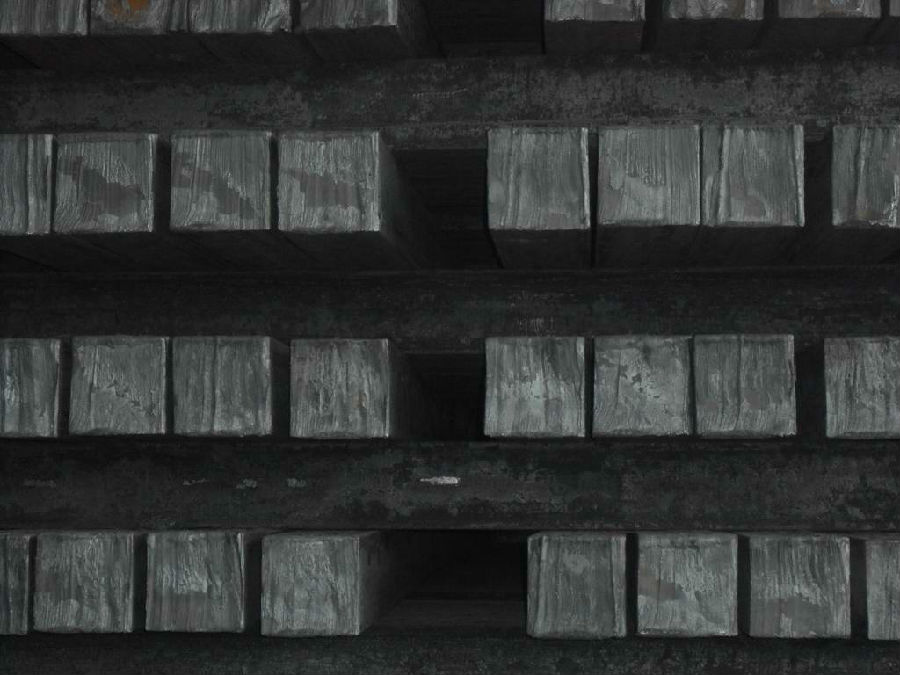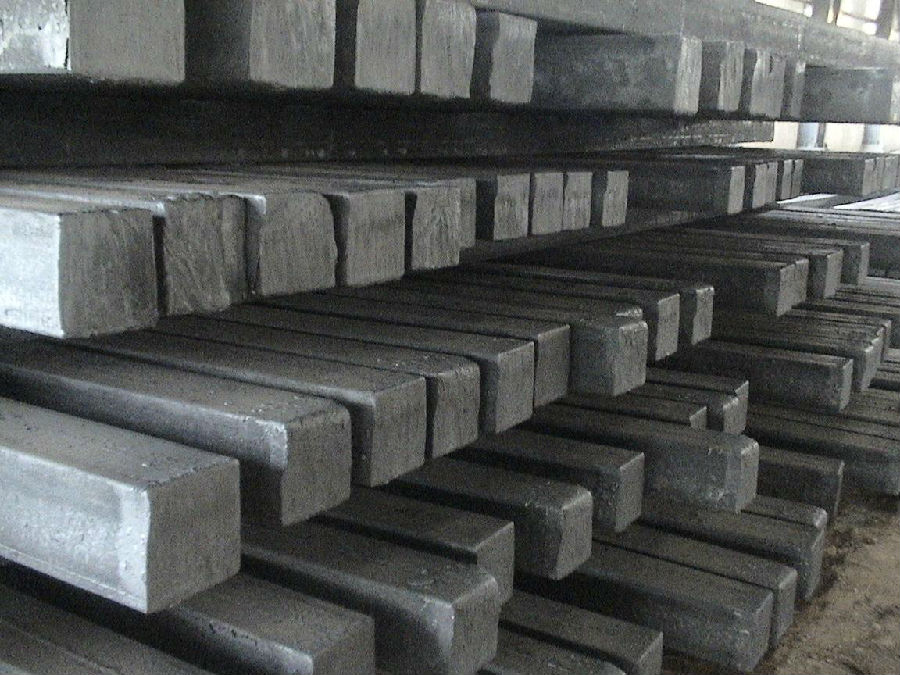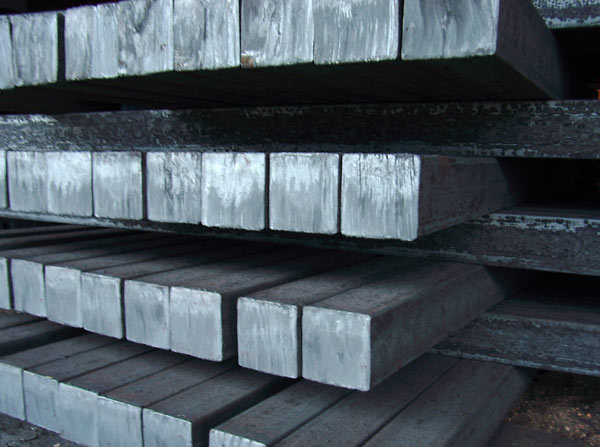Carbon Steel Billets Square Billets High Quality
- Loading Port:
- Tianjin
- Payment Terms:
- TT OR LC
- Min Order Qty:
- 24 m.t.
- Supply Capability:
- 24000 m.t./month
OKorder Service Pledge
OKorder Financial Service
You Might Also Like
Specifications
square steel billets 3sp & 5sp grade
1.3SP, 5SP
2.terms of payment: L/C at sight
3.size: 50~150mm
4.length: 5.8~12m
Specifications
| product name | square steel billets 3sp & 5sp grade |
| main types |
|
| size |
|
| application | 1.M.S. Billets are used for rolling of TMT Re-Bars of Fe415 and Fe500 Grade and various other structural steel products. 2.CRS Billets are used fro rolling of CRS TMT Re-Bars. 3.Special Alloy Billets are used for rolling of any special grade TMT Re-Bars like Earthquake resistant TMT Re-Bars and for special grade structural steel products. |
| notes | We produce world class quality steel billets which meets the specific requirements of the clients |



- Q:How are steel billets heat-treated?
- Steel billets are typically heat-treated through a process called annealing, which involves heating the billets to a specific temperature and then slowly cooling them. This helps to relieve any internal stresses and improve the overall strength and ductility of the steel.
- Q:What are the different types of steel billet packaging?
- The industry commonly utilizes various steel billet packaging options. These include bundles, wooden crates, steel cages, plastic wrapping, and custom packaging. 1. Bundles: Among the most prevalent packaging methods for steel billets are bundles. This approach involves tightly binding multiple billets together using steel straps or wire rods. By doing so, it ensures the billets remain secure and undamaged during transportation or storage. 2. Wooden crates: Another popular choice for steel billet packaging is wooden crates. These crates are constructed from sturdy wooden materials and are designed to offer maximum protection to the billets. They are often reinforced with steel bands or straps to maintain the security of the billets. 3. Steel cages: Steel cages or racks are frequently employed to package steel billets. These cages are made of steel and are capable of holding multiple billets simultaneously. They provide a robust and secure packaging solution while facilitating easy handling and transportation. 4. Plastic wrapping: In certain situations, steel billets may be wrapped in plastic film or shrink wrap to safeguard against moisture and corrosion. This method is commonly utilized when the billets are stored or transported in controlled environments. 5. Custom packaging: Depending on specific requirements, steel billets can be packaged in customized containers or packaging solutions. These may include specialized crates, boxes, or containers tailored to fit the billets' dimensions and weight, ensuring optimal protection during transportation and storage. In conclusion, the selection of steel billet packaging is dependent on factors such as billet size and weight, transportation method, and desired level of protection. Each packaging option offers unique advantages and is chosen based on the industry's and customer's specific needs.
- Q:Are steel billets affected by extreme temperatures?
- Steel billets can be affected by extreme temperatures. High temperatures cause them to expand and deform due to the thermal expansion property of steel. Conversely, extremely low temperatures can make steel billets contract and become more brittle as the cold temperature reduces their ductility, making them more susceptible to fracture. Hence, it is essential to take into account the impact of extreme temperatures on steel billets during their design, handling, and storage to avoid any undesired deformation or failure.
- Q:Can steel billets be used for making hand tools?
- Hand tools can be made using steel billets. Steel billets are semi-finished steel products that are commonly used for further processing and shaping into different forms. Steel billets can be used to manufacture various hand tools such as wrenches, pliers, hammers, screwdrivers, and many others. Steel is a popular choice for manufacturing hand tools because of its strength, durability, and resistance to wear and tear. Steel billets can be forged, machined, or heat-treated to achieve the desired shape, size, and hardness required for hand tools. The versatility of steel allows it to be easily molded into different tool designs, providing the necessary strength and functionality. Moreover, steel hand tools offer several advantages over tools made from other materials. The high tensile strength of steel ensures that the tools can withstand significant force and pressure without breaking or deforming. Additionally, steel tools are resistant to corrosion and rust, making them suitable for both indoor and outdoor use, even in harsh environments. In conclusion, steel billets are indeed suitable for manufacturing hand tools. The strength, durability, and versatility of steel make it an excellent material for producing a wide range of hand tools that can endure heavy usage and provide long-lasting performance.
- Q:How are steel billets used in the manufacturing of gears and bearings?
- Gears and bearings rely heavily on steel billets as a vital raw material during their manufacturing process. These billets, which are semi-finished steel products, are typically cast into rectangular or square shapes. They act as the starting point for producing different components utilized in gears and bearings. Regarding gears, steel billets are initially cut into smaller sections to create gear blanks or rough gear shapes. These blanks then undergo a series of operations, including forging, machining, and heat treatment. Forging involves shaping the gear blank using compressive forces, enhancing the mechanical properties of the steel and aligning the grain structure for increased strength. Subsequently, machining is employed to eliminate excess material, refine the shape, and form the gear teeth. Ultimately, heat treatment is applied to enhance the hardness, toughness, and wear resistance of the gear. Similarly, in bearing manufacturing, steel billets are transformed into various components such as inner and outer rings, balls or rollers, and cages. Initially, the billets are cut and shaped into rough rings, which are further processed through machining operations to attain the desired dimensions and precision. Often, the rings undergo heat treatment to enhance their hardness, improve surface finish, and increase resistance to wear and fatigue. The balls or rollers are also produced from steel billets using a similar process, while cages are typically fabricated separately using sheet metal. In summary, steel billets play a vital role in the manufacturing of gears and bearings. They serve as the foundational material, undergoing various shaping, machining, and heat treatment processes to create the final components with the required strength, durability, and precision. The quality of the steel billets used significantly impacts the performance and longevity of gears and bearings, thus making them an essential aspect of the entire manufacturing process.
- Q:What is the billet price in China today?
- In the short term is still the main shock, the domestic price rise compared to the previous 10 yuan / ton, the price is not the same in each region, so you still have to carefully check the price, from the upstream iron ore, domestic ore prices stabilize, without much change, with the real estate back to temperature. Building materials tend to be stable, the price is good to pick up the trend, the overall no big changes, specific to my steel network detailed inquiries, information here will be updated every day
- Q:Is the reaction of carbon and carbon dioxide a redox reaction?
- Is the redox reflect the oxidizing agent is CO2 C 2009-10-22, the reducing agent is the oxidizing agent is CO2, is C 2009-10-22 reductant is redox reaction. Price reduction in carbon dioxide carbonation, was reduced, so is the oxidant.
- Q:How are steel billets used in the manufacturing of wire rods?
- Steel billets are used in the manufacturing of wire rods as they are heated and then rolled into thin, long cylindrical shapes. These billets undergo a series of processes such as hot rolling, cooling, and wire drawing to transform them into wire rods of various sizes. The wire rods are then utilized in various industries for applications like construction, automotive parts, and electrical wiring.
- Q:What are the different surface finishes available for tool steel billets?
- Tool steel billets offer a range of surface finishes to cater to different requirements and applications. Some commonly used surface finishes are as follows: 1. Hot Rolled: This is the most basic surface finish achieved by hot rolling the steel billets, resulting in a rough and scaled surface. It is suitable for applications where a smooth finish is not crucial. 2. Cold Rolled: For a smoother and refined surface finish, the steel billets undergo cold rolling. Cold rolled surfaces are preferred when a higher degree of precision and accuracy is required. 3. Turned: By using a lathe to remove material, the steel billet can achieve a smooth and polished surface finish. Turned surfaces are commonly employed in applications where aesthetic appearance and precision components are essential. 4. Ground: Grinding is employed to achieve a flat and smooth surface finish on tool steel billets. It is commonly utilized when a high level of precision and dimensional accuracy is necessary, particularly in tooling applications. 5. Polished: This is the most refined surface finish achieved by using abrasives and polishing compounds, resulting in a mirror-like surface. Polished surfaces are often chosen for decorative or high-end applications where a visually appealing finish is desired. 6. Coated: Additionally, tool steel billets can be coated with various materials to enhance their surface properties. Coatings such as nitride, carbide, or diamond-like carbon (DLC) can improve hardness, wear resistance, and friction properties. The choice of surface finish for tool steel billets depends on specific requirements, including desired accuracy, appearance, and performance characteristics.
- Q:How are steel billets used in the manufacturing of fasteners?
- Fasteners are devices utilized for the purpose of joining or securing multiple objects together, and steel billets play a vital role in their production. These billets serve as the primary material from which fasteners are created. Typically, steel billets possess a square or rectangular shape and are considered semi-finished products. To produce them, molten steel is poured into molds and allowed to cool and solidify through a process known as casting. Once the steel billets have been obtained, they undergo a series of manufacturing procedures to transform them into fully functional fasteners. These procedures encompass hot rolling, cold drawing, and machining. The initial step involves hot rolling, in which the steel billets are subjected to high temperatures and passed through a set of rollers. This process enables the billets to take on the desired shape of long, cylindrical bars or rods with a specific diameter. Following hot rolling, the bars undergo cold drawing. This process entails pulling the bars through a series of dies to reduce their diameter and enhance their surface finish. Additionally, cold drawing contributes to improving the mechanical properties of the steel, rendering it stronger and more resilient. Finally, the steel bars are machined to create fasteners with precise designs. This involves cutting, threading, and forming the bars into bolts, screws, nuts, or other types of fasteners. Subsequently, the machined fasteners undergo heat treatment processes such as quenching and tempering to further enhance their strength and hardness. In summary, steel billets hold immense importance in the manufacturing of fasteners as they serve as the raw material that undergoes various transformation processes. Through hot rolling, cold drawing, and machining, steel billets are shaped into the desired form, resulting in high-quality fasteners that meet industry standards.
1. Manufacturer Overview |
|
|---|---|
| Location | |
| Year Established | |
| Annual Output Value | |
| Main Markets | |
| Company Certifications | |
2. Manufacturer Certificates |
|
|---|---|
| a) Certification Name | |
| Range | |
| Reference | |
| Validity Period | |
3. Manufacturer Capability |
|
|---|---|
| a)Trade Capacity | |
| Nearest Port | |
| Export Percentage | |
| No.of Employees in Trade Department | |
| Language Spoken: | |
| b)Factory Information | |
| Factory Size: | |
| No. of Production Lines | |
| Contract Manufacturing | |
| Product Price Range | |
Send your message to us
Carbon Steel Billets Square Billets High Quality
- Loading Port:
- Tianjin
- Payment Terms:
- TT OR LC
- Min Order Qty:
- 24 m.t.
- Supply Capability:
- 24000 m.t./month
OKorder Service Pledge
OKorder Financial Service
Similar products
New products
Hot products
Related keywords





























